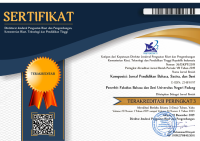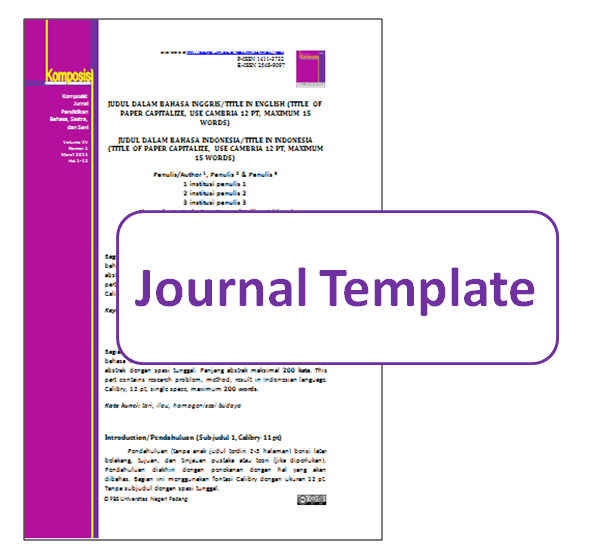ELICITATION TECHNIQUES IN CLASSROOM INTERACTION USED BY ENGLISH TEACHERS AT SMAN 1 2x11 KAYUTANAM
 ), Hermawati Syarif(2), Refnaldi Refnaldi(3),
), Hermawati Syarif(2), Refnaldi Refnaldi(3), (1) Pascasarjana UNP
(2)
(3)
 Corresponding Author
Corresponding Author
Copyright (c) 2019 Komposisi: Jurnal Pendidikan Bahasa, Sastra, dan Seni
DOI : https://doi.org/10.24036/komposisi.v20i1.10036
Full Text:
 Language : en
Language : en
Abstract
This study aims to explain the elicitation techniques teachers use to interact in the classroom. This research is descriptive research. The subjects of the study were English teachers at SMAN 1 2x11 Kayutanam. The data were collected using video recordings and observations in four different classes. Conversation analysis is used to analyze and classify data. The research findings show that there are five elicitation techniques used by teachers. The technique is to ask using pictures, texts, dialogues, body language and techniques designed by the teacher himself. Asking to use dialogue is a technique most often used by teachers to ask students. In addition, inquiring using body language is very rarely used by teachers. In the use of elicitation techniques, teachers use several types of questions. The questions consist of yes / no questions, closed questions and open questions. In its use, English teachers ask more yes / no questions and closed questions, while open questions are rarely used. Student responses to elicitation techniques used by teachers are dominated by simple or short answers. Based on the above findings, it can be concluded that teachers tend to use one same elicitation technique at each meeting so that the process of interaction in the classroom is still dominated by the teacher.
Keywords
References
Brown, D. H. (1994). Teaching by principles; An interactive approach to language pedagogy. New Jersey: Prentice Hall Regents.
Doff, A. (2013). Teach English: A training course for teachers. Cambridge: Cambridge University Press.
Kearsley. G.P., (2010). Questions and asking question in verbal discourse: a cross disciplinary review. Journal of Psycholinguistic Research, 5(3).
Kindsvatter, R. W. W. & M. Ishler. (1988). Dynamics of Effective Teaching. New York: Longman. pp. 20-34.
Long, M. (1996). The role of linguistic environment in second language acquisition, In W. Ritchie & T. Bhatia (eds). Handbook of research on second language acquisition. New York: Academy.
Nunan, D. (1991). Language teaching methodology. Hemel Hempstead: Prentice Hall.
Thomas, A. M. (1987). Classroom interaction. Oxford: Oxford University Press.
Thuy, N. T. (2011). The exploration of eliciting techniques used by fourth year students in their teaching practicum at english division I, faculty of English language teacher education, university of languages and international studies, Vetnam national university. Thesis. Hanoi: Vietnam National University.
Tsui, A.B.M. (1995). Introducing classroom interaction. London: Penguin.
Walsh, S. (2013). Classroom discourse and teacher development. Edinburg: Edinburg University Press.
Wu, Kam-Yin (1993). Classroom Interaction and Teacher Questions. Revisted. RELCJournal, 24(22), 49-68.
Yanfen, L. & Yuqin, Z. (2010). A Study of teacher talk in interactions in English classes. Chinese Journal of Applied Linguistics, 33(2).
 Article Metrics
Article Metrics
 Abstract Views : 904 times
Abstract Views : 904 times
 PDF Downloaded : 92 times
PDF Downloaded : 92 times
Refbacks
- There are currently no refbacks.
Copyright (c) 2019 Komposisi: Jurnal Pendidikan Bahasa, Sastra, dan Seni

This work is licensed under a Creative Commons Attribution-NonCommercial 4.0 International License.











